Home »
Misc »
How to prevent getting blocked in basketball
How to prevent getting blocked in basketball
Why Is Getting Blocked Such A Big Deal In Basketball?
Block shot is one of the essential stats you can get in basketball. This is the one that determines how good a player is defensively. Many people make blocked shots a big deal in basketball. When your shot gets blocked, many people will shout, “ohh” or “get out of here!”. However, why do fans get hyped when the defensive player blocked the shot of the offensive player? Why is getting blocked a big deal in basketball?
When a player shoots the ball and gets blocked, his morale is lowered, and will most likely hesitate to take another shot. Getting blocked may hit your morale. It also boosts the confidence of the other team because they prevented your shot.
However, there is much more you need to learn about this topic. I will tell you various reasons why you are getting blocked by your opponents during a basketball game. Also, I will give some tips so that your shots will never get blocked again.![]() If you are ready, let’s go!
If you are ready, let’s go!
Reasons Why You Are Getting Blocked In Basketball
Getting blocked in basketball is a big deal, and it can lower down your morale and confidence. To prevent your opponents from blocking your shots, I list down the five reasons why your shots are getting blocked.
The five reasons why you are getting blocked in basketball are:
You Don’t Protect The Ball
The first reason why your shots are getting blocked is that you don’t protect the ball when you go inside the rim. Protecting the ball when driving is essential. It prevents opponents from stealing the ball from you or blocking your shots.
When you drive inside the rim, make sure that your other hand is protecting the ball from opponents. You can also create a contact or bump them hard to create space so that the ball is protected.
You Are Too Slow
The second reason why your shots are getting blocked is that you are too slow. When you drive inside the basket, you have to make sure that you turn on your nitro. If you are driving slow, the opponents may easily read where you are going and block your shot.
If you are driving slow, the opponents may easily read where you are going and block your shot.
If your shots are getting blocked when you shoot outside the three-point line or if it is a jump shot, it means your shooting release is slow. When you look at the shooting release of the greatest shooters in the NBA, it gives you the reason why their shots are not getting blocked. These greatest shooters of all time have quick release!
Execute some speed exercises, or you can use ankle weights when you jog. Ankle weights are effective, and they can help you to run fast. Also, you can do some squats and other leg workouts to keep your legs strong. Practice releasing the ball quickly from your hands. So that the next time you shoot threes or jump shots, your shots will never get blocked by your opponents.
You Are Not Faking Or Switching Direction
The other reason why you are getting blocked in basketball is that you are not making some fakes and you don’t switch direction.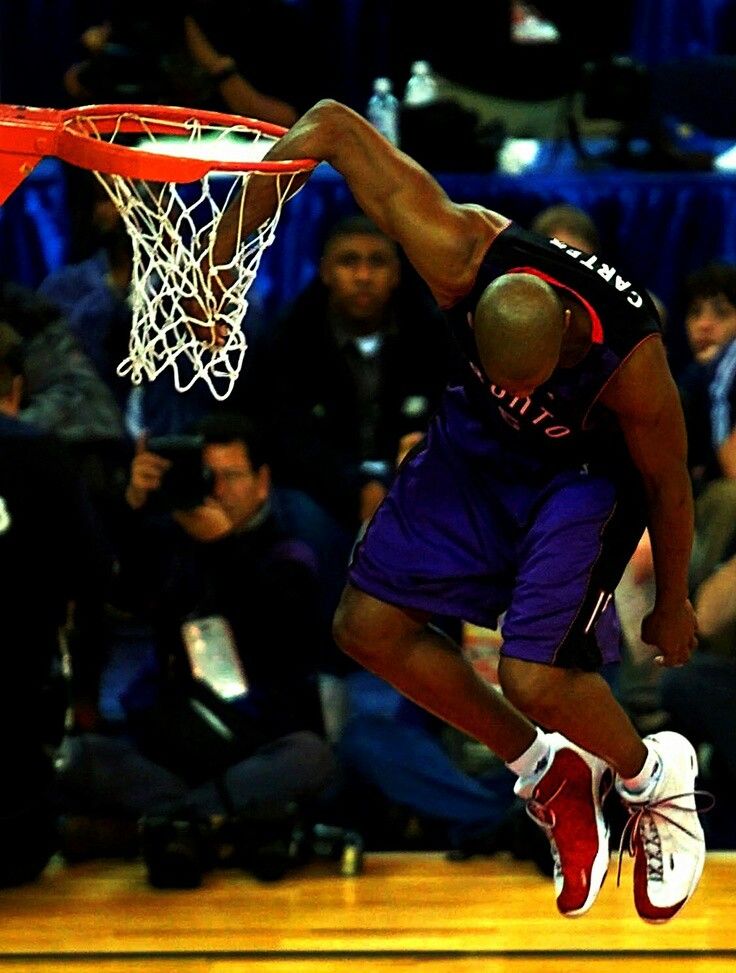 Faking is essential, especially if you are good at it because it will remove the focus of your opponents. When you fake and the defensive player bite on your bait, you can have enough space for an easy shot.
Faking is essential, especially if you are good at it because it will remove the focus of your opponents. When you fake and the defensive player bite on your bait, you can have enough space for an easy shot.
Switching direction is also essential. When you are driving inside the paint, make sure that you switch your direction. You can euro step or do some sidestep to confuse your opponent. When your opponent bites on your bait again, you can have an easy layup or dunk.
You Don’t Create Separation
The other reason why your shots are getting blocked in basketball is that you don’t create any separation or space. Space is essential when you are going to take a shot. When you are going for a jump shot or three-point shot, you have to make sure that you have enough space.
If you don’t have enough space, your shot may get blocked. Look at some greatest shooters of all time. They can create spaces for themselves before they take a shot outside the three-point line.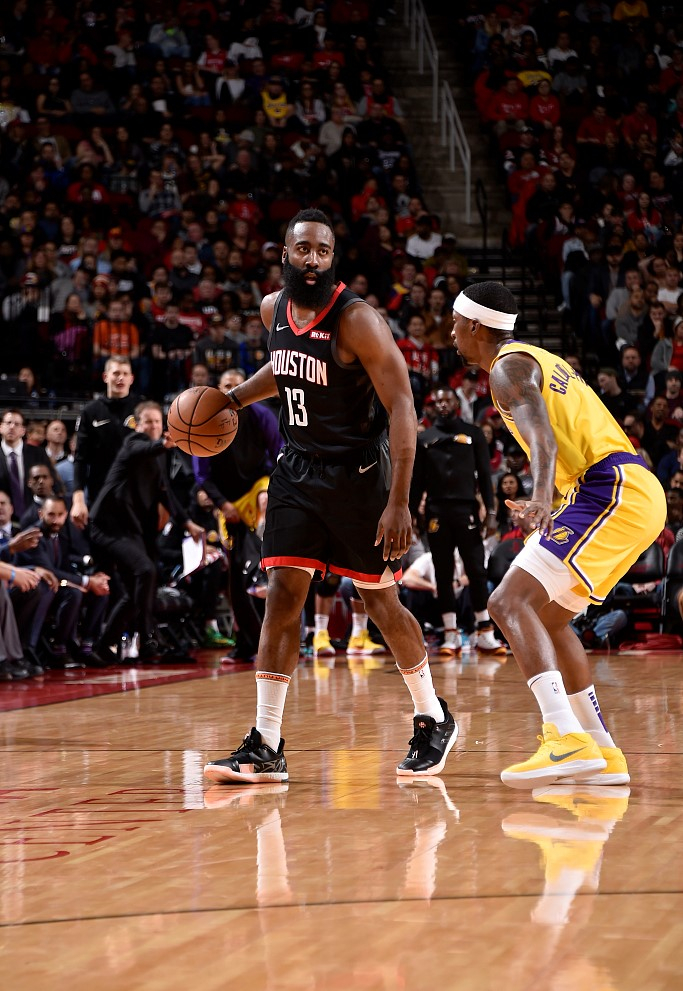 Apply some moves that create space between you and your defender. Stepback is the easiest way to create separation, so try it first.
Apply some moves that create space between you and your defender. Stepback is the easiest way to create separation, so try it first.
Your Shot Selection Doesn’t Change
The other reason why your shots are getting blocked is that you only have few shot selections. When your shot selection is repeated, the opposing team may easily read you. If they can easily read you, they can run fast and chase your shot.
It is better to have many shot selections so that you will be unreadable. If you are unreadable, your opponents may have a hard time guessing which spot you take a shot. Also, if you have many shot selections, you will be unstoppable on the court. Why? Because you can shoot anywhere inside the court, and only good defense can stop you.
How Do I Stop Being Blocked In Basketball Games?
Now that you know the reasons why your shots are getting blocked in basketball, you now ask for help. So, how can you stop opponents from blocking your shots in basketball games? Here are the tips.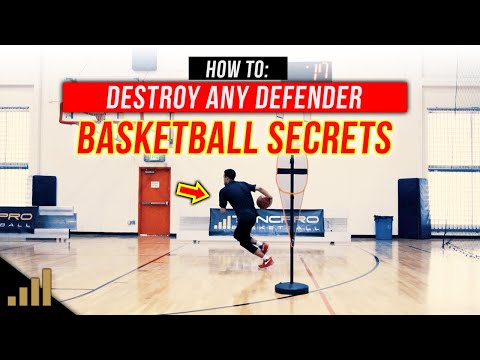
To stop opponents from blocking your shots, you have to do these five things:
- You have to create separation
- Be quick all the time
- Protect the ball
- Fake your opponents
- Switch direction
Creating a separation or space in basketball is essential in basketball. It is a skill that all basketball players must-have. Why? Because space is the only thing to make shots. If you don’t have enough space, then your shot will most likely get blocked or will not get inside the basket.
You have to be fast if you don’t want your opponents to block your shots. You need to have a quick release, and you need to be fast when driving inside the basket. If you are slow, your opponents may effortlessly read where you are going and when you will take a shot.
When going inside the basket, you have to make sure that the ball is hundred percent protected. Protect the ball with your other hand when you drive inside and if you are doing a layup.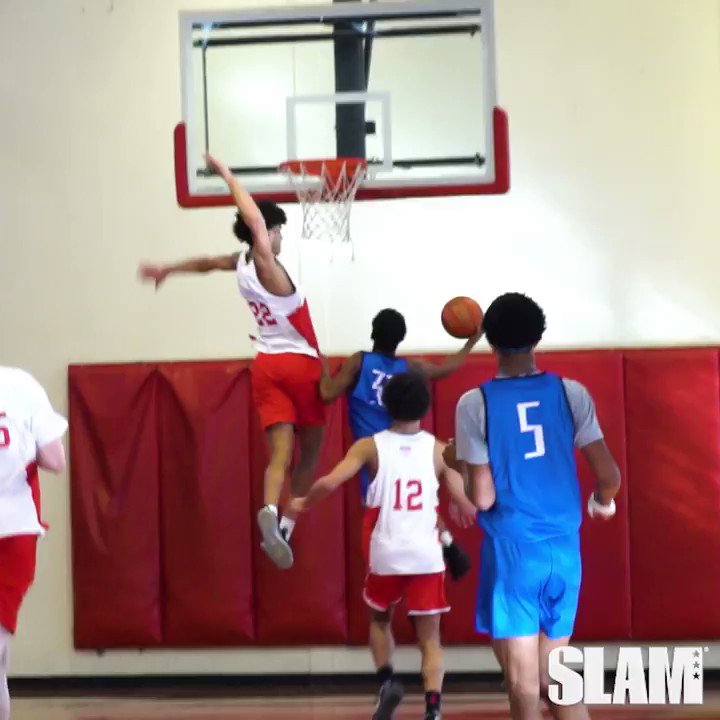 You can swat away the hands of your opponents when you are going for a layup.
You can swat away the hands of your opponents when you are going for a layup.
You need to learn how to fake your opponents if you don’t want your opponents to block your shots. Fake moves are one of the best things to create confusion. When your defender bites on your bait, you will have a chance to have an easy shot.
Switching direction can also prevent your opponents from blocking your shots. However, you need to be fast when switching directions. If you are slow when you switch directions, the defender may easily notice where you are going.
Overall, you have to practice your offense if you don’t want a defender to block your shots. Practice the basics and advance of dribbling, the crossover, stepbacks, and other basketball moves that can create separation between you and your defender.
Why Block Is Important In Basketball?
Block is essential because it is the one that prevents an offensive player from scoring. Aside from steals, blocks are also effective if you did it correctly.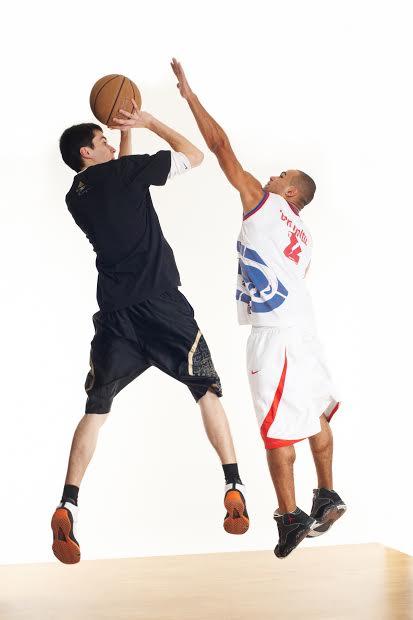 When you are good at blocking shots, you are a valuable player for your basketball team. Why? Because you have a good defense, and defense is all a basketball team needs to win.
When you are good at blocking shots, you are a valuable player for your basketball team. Why? Because you have a good defense, and defense is all a basketball team needs to win.
Centers or tall basketball players are the ones that are good at blocking shots. They are tall, which is why they can effortlessly reach any shots before it goes inside the rim. Players with high vertical leap can also effortlessly block a shot. They only have to jump high to reach the ball.
Why Do NBA Players Block Shots After Whistle?
NBA players are known for blocking shots after the whistle. Why do NBA players do this? NBA players block the shots after a whistle because they don’t want a player to get into the rhythm and find their shot. Tall players that are standing close to the basket are the ones who block the shots after a whistle.
Kevin Garnett is the famous NBA player who blocks shots after a whistle is made. He loves trash talking and getting inside the skin of his opposing player.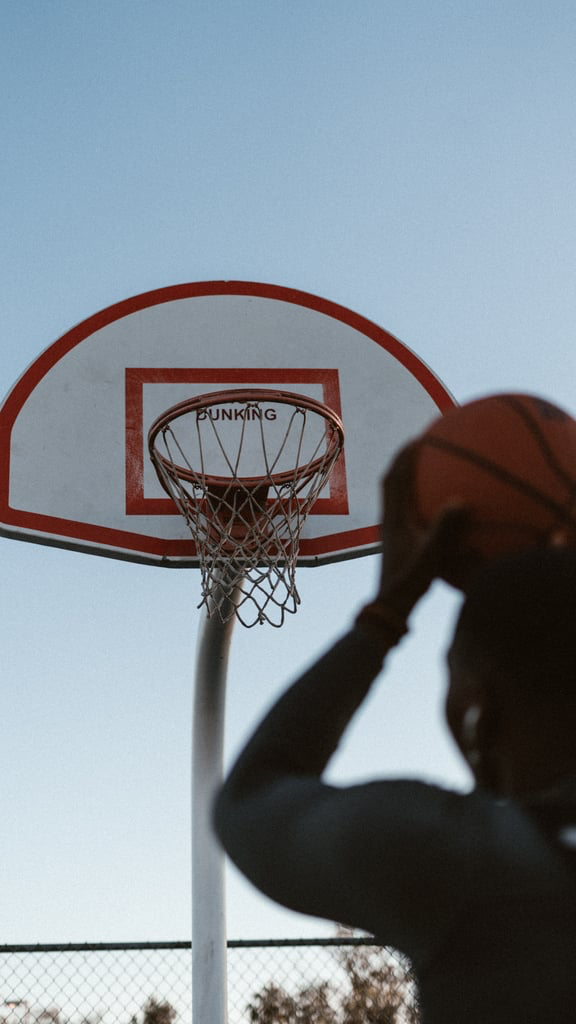 Joakim Noah is one of the players that idolized Kevin Garnett. Noah told Garnett on the court that he is his biggest fan. However, Garnett continues to trash talk him with lots of bad words.
Joakim Noah is one of the players that idolized Kevin Garnett. Noah told Garnett on the court that he is his biggest fan. However, Garnett continues to trash talk him with lots of bad words.
Final Thoughts
Getting blocked in basketball is a big deal for all basketball players, coaches, and fans. Blocks are one of the reasons why basketball is an exciting sport. When you block the shot of your opponents, it increases your morale and helps you become more confident. Blocks are essential, not only defensively but also mentally.
Why do you think block shots are a big deal in basketball? Comment your answers below!
Spread the love
Blocking In Basketball | How To Block A Shot Easy In 4 Steps
Contents
- Blocking in Basketball
- Blocking Mistakes
- Contact Fouls
- Goaltending
- Rushing
- How to Block a Shot
- 1. Location
- 2. Mimicking
- 3. Anticipation
- 4. Blocking
- Practicing Blocking
- Recap
Although it may not seem like it, good defense in basketball can be the difference between winning and losing a game.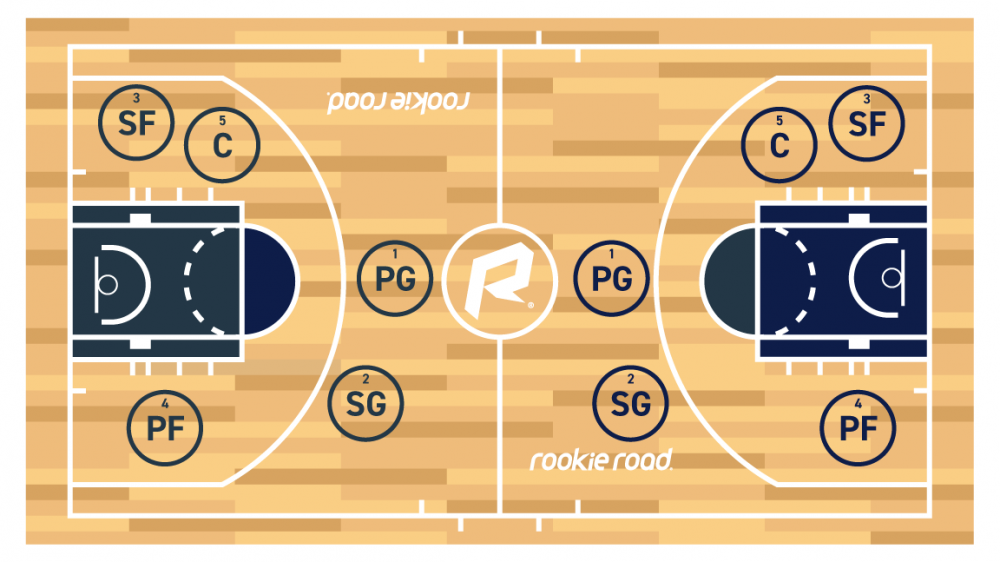 It’s importance usually gets overshadowed by offense, which tends to get more attention, but behind every great team is a solid defense to back it up.
It’s importance usually gets overshadowed by offense, which tends to get more attention, but behind every great team is a solid defense to back it up.
One of the most intimidating aspects of defending that gets performed throughout a game is blocking shots and lay-ups in an attempt to prevent the offensive team from scoring.
Blocking in basketball is a powerful tool that contributes to a team’s defensive capabilities, and has been used masterfully by various players throughout NBA History, most notably Kareem Abdul-Jabbar and Mark Eaton, who were some of the best shot-blockers ever.
The act of blocking is pretty simple; it involves you getting in the way of your opponent and using your hand to stop the basketball, but it can oftentimes prove difficult to deflect the ball successfully.
To have a better chance of deflecting successfully, it’s important to understand what’s being done wrong and learn how to correct it.
For this reason, we’ll be addressing the usual mistakes people make that sabotage their chances of stopping an opponent, and may even turn the tide in the other team’s favor, as well as learning how to properly go about stopping the basketball before it ever gets a chance to reach the net.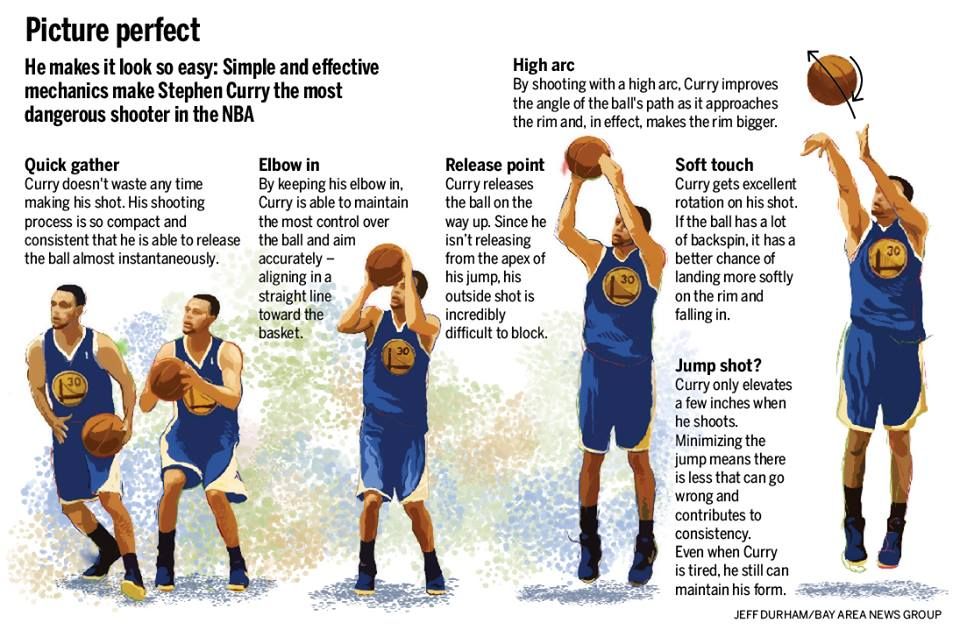
(Keith Allison from Hanover, MD, USA, Marcus Smart (34481569696), CC BY-SA 2.0)
Disclosure: This post may contain affiliate links. If you click through and make a purchase, I’ll earn a commission at no additional cost to you. Read my full disclosure here.
Blocking in Basketball
Before we get into the problems and solutions, let’s first define some key points that concern blocking in basketball.
- You can stop the projectile at any spot in the court, but it’s usually done at the low post predominantly because this is where the defense of tall players are located (power forwards and centers).
- Deflecting a basketball is often done simply by extending one or both arms up and using your hands to either obstruct the basketball’s path or swat the basketball off course.
- Tall players have an easier time than most other players when holding off shots because of their long arms and large frame.
These are important points to clarify upfront since they’ll explain most of what you’ll see on the court. Shots or lay-ups that occur at the low post are almost always worth deflecting, but anything on or outside the perimeter is arguably not a good trade-off.
Shots or lay-ups that occur at the low post are almost always worth deflecting, but anything on or outside the perimeter is arguably not a good trade-off.
Shots made from that far already have a lower percentage of being made, and depending on the shooting percentage of the person shooting, it’s reasonable to suggest that you just guard them like normal.
Your height can definitely affect your ability to block; it isn’t just a coincidence that some of the best shot-blockers were also tall, their height provided greater reach to stop projectiles with ease. That isn’t to say that there aren’t some amazing players that are short, and to clarify you can still stop a projectile even if you aren’t extremely tall.
Your vertical jump, your speed, and even your mental game in predicting the offense are all factors that contribute immensely to your ability to block, and this applies to both short and tall players.
Learning to increase your vertical jump and your speed both improve your performance when defending to keep up with the offense and meet the ball at the point of release, and your mental toughness is a critical component in staying focused on the court.
When developed they can help improve a player’s defensive capabilities, but on the surface, a short player trying to guard a player taller than him is at a disadvantage, and in these cases, it’s important to assess the trade-offs in deciding who’s guarding who.
Blocking Mistakes
(globalite, Kevin Durant and Robertas Javtokas, CC BY-SA 2.0)
There’s a bit of risk involved for defenders when blocking because if they make a mistake, it can quickly backfire and even help the opposing team. The greatest mistakes come from not knowing the rules in basketball as well as rushing while guarding without taking proper measures of the situation.
Contact Fouls
If you make contact with the shooter while attempting to repel the shot, that results in a foul that gives free throw attempts to the offense. This also includes hitting the opponent’s hand while trying to repel or alter the projectile, which will still result in a foul.
This is a reason why most attempts go unsuccessful. When you’re defending the shooter, keep a moderate distance between you and him, and wait for him to release the ball. At the point of release, whether using one arm or both, keep them straight and use your hands to obstruct the path of the basketball.
When you’re defending the shooter, keep a moderate distance between you and him, and wait for him to release the ball. At the point of release, whether using one arm or both, keep them straight and use your hands to obstruct the path of the basketball.
Be careful to avoid contact when reaching in for the basketball. There is such a thing as incidental contact between the shot-blocker and the shooter that the referee will not call a foul on, but that is only a contact that occurs on the way down from jumping after the attempt.
Goaltending
Another problem that’s less common but that many players do at times unknowingly is goaltending.
If you in any way alter a basketball shot that is already on its way down or descending relative to its arc, that is considered goaltending and will automatically be counted as if it had been made, granting the offensive team however many points it warranted.
This rule was largely created to prevent high jumpers from contesting the basket and swatting away projectiles, much like a goalie in soccer would defend the goal.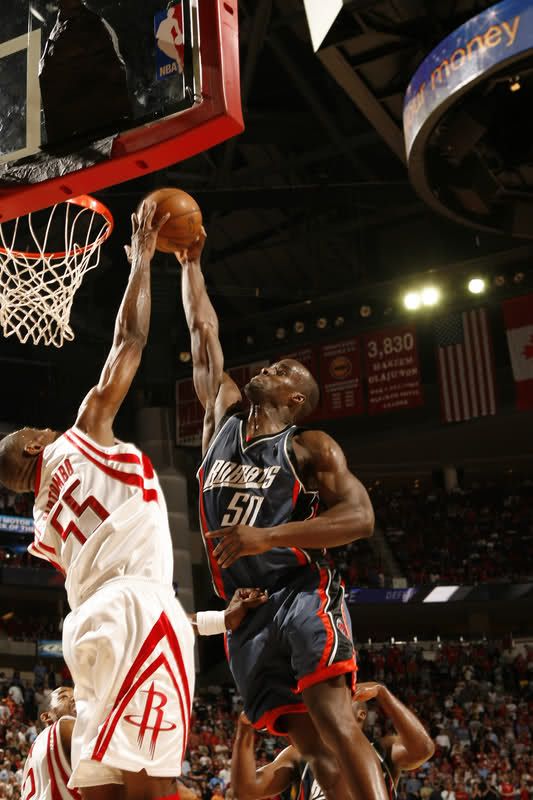 This leaves you with a brief window in which can you deflect the projectile, which is from the point of release until about the end of the ascension portion of the shot’s arc.
This leaves you with a brief window in which can you deflect the projectile, which is from the point of release until about the end of the ascension portion of the shot’s arc.
(Keith Allison, Jason Kidd John Wall, Cropped by BallAmazingly, CC BY-SA 2.0)
I’ll go ahead and lump interference alongside goal-tending; interference is a violation that can be performed in many different ways:
- Touching the ball or any part of the basket while the ball is on the rim of the basket.
- Touching the ball when it’s within the cylinder extending upwards from the rim.
- Reaching up through the basket from below and touching the ball, whether inside or outside the cylinder.
- Pulling down on the rim of the basket so that it contacts the ball before returning to its original position, or during a shot attempt.
These all constitute a basket interference violation, so it’s very important to keep them in mind as things to avoid doing.
Rushing
It’s inevitable that at some point you’ll naturally want to rush in and swat the ball, and that’s usually when the fouls start getting called.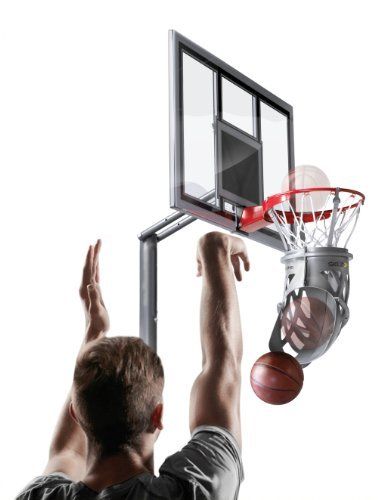 Another thing to be careful of is a pump-fake from the offense that’ll often trick you into jumping, at which point the shooter may get around you and take his shot.
Another thing to be careful of is a pump-fake from the offense that’ll often trick you into jumping, at which point the shooter may get around you and take his shot.
For this reason, one of the best methods of defending is simply to mimic the other player so that you’re on par with what they’re doing and moving at the same tempo. In this way, you’ll learn to slow down instead of skipping ahead and have the person you’re guarding on lock-down.
Now, this isn’t exactly easy to do and won’t always work, and the pump-fake is a great example of where you need to be vigilant of your opponent. If the person you’re guarding starts pulling out tricks to deceive you, then it naturally becomes a lot harder to defend them, but now you’ll be more cautious of your opponent’s future moves in anticipation of a fake-out.
At this point, it’s best to rely on your mental wit and in-game experience to contest their shot. As such, to prepare for these events it’s best to practice your defense with another person on the court, and this along with you’re in-game experience is what will give you the mindset necessary to minimize rushing.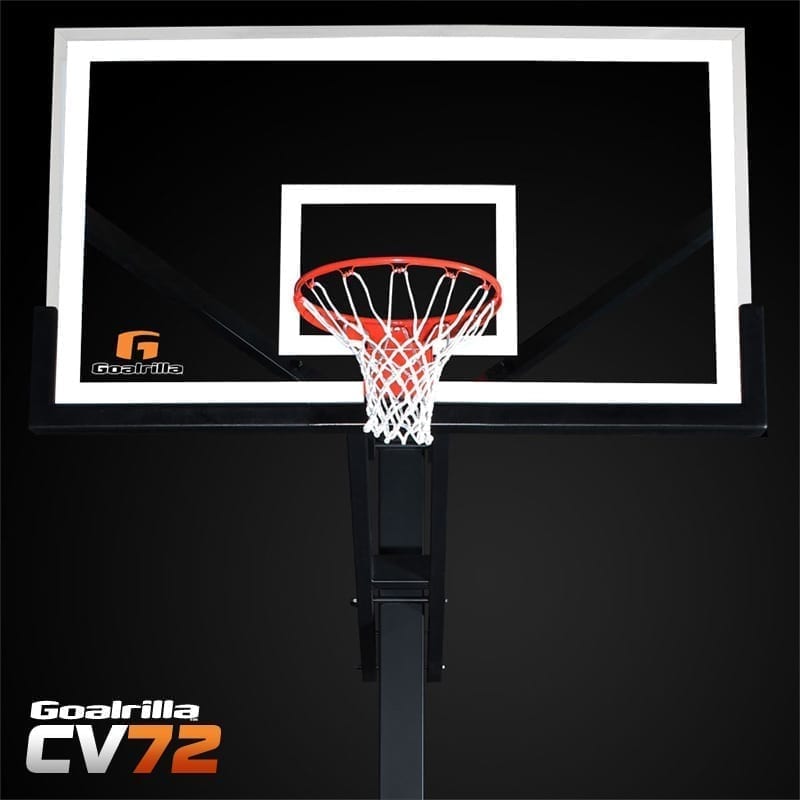
How to Block a Shot
(Keith Allison from Hanover, MD, USA, Otto Porter Jr., Dwight Howard (34136333262), CC BY-SA 2.0)
To stop a shot correctly, we’ll incorporate what we’ve already established on both blocking and avoiding mistakes to arrive at a solid method.
1. Location
Depending on where the shot is being taken from, as well as who is taking it, will determine whether we try and stop it. As previously stated, these usually take place on the low post, and if a shot is being made on or outside perimeter, there’s little reason to try and repel it.
Unless the shooter has a high shooting percentage and knows how to shoot a basketball well, then the best thing to do is try to contest the shot and apply pressure to the shooter while maintaining your distance to avoid a foul.
2. Mimicking
When you’re guarding your opponent, get right in front of him and stay on him at all times. You want to copy his movements to make sure that your in sync with what he does.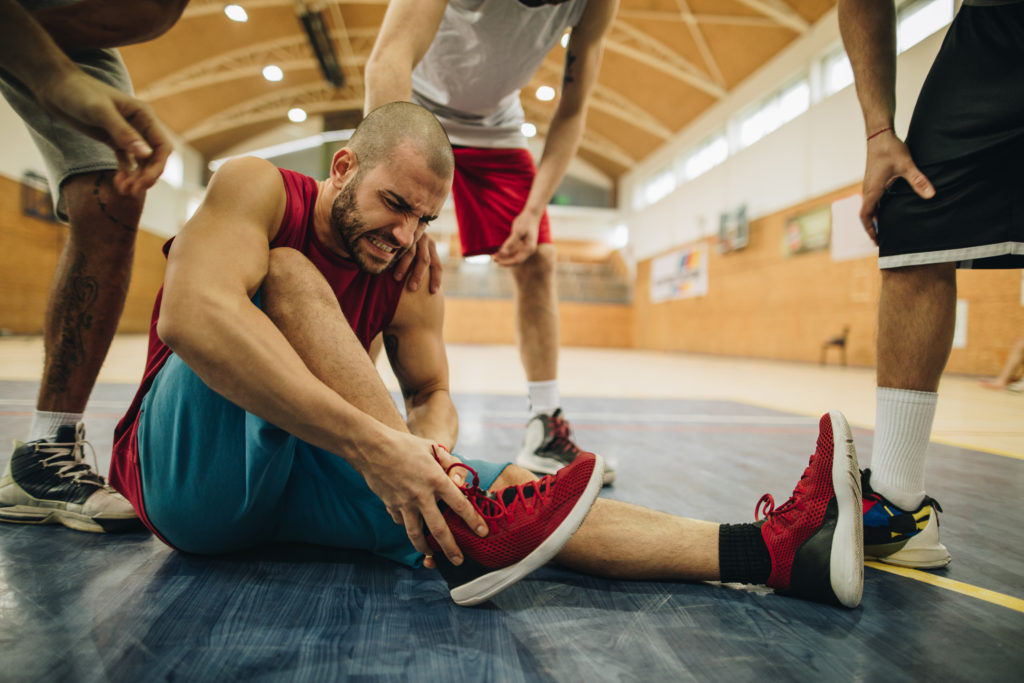 If he runs towards the hoop, you stay directly next to him, and if he jumps, you’re jumping after them with your arms held straight up to contest and hopefully deflect the shot.
If he runs towards the hoop, you stay directly next to him, and if he jumps, you’re jumping after them with your arms held straight up to contest and hopefully deflect the shot.
Be careful of your timing so that you don’t miss your attempts, but also keep in mind that you should be jumping after the offensive player to ensure you don’t get deceived with a shot fake.
(Keith Allison from Hanover, MD, USA, Bradley Beal, Isaiah Thomas (32133112340), Cropped by BallAmazingly, CC BY-SA 2.0)
Follow these general guidelines for effective guarding:
- When moving, make sure to stay on the balls of your feet to maximize your mobility while on the court.
- In a squatting stance, spread your feet shoulder-width apart and keep them square relative to the offensive player. This aids with both mobility and jumping power by keeping you low to the ground and maintaining a strong foundation from which to jump.
- Keep your chest facing the shooter while guarding to give yourself the option of using either hand to block and be sure to manage your view so that you have a clear sight of the person shooting.
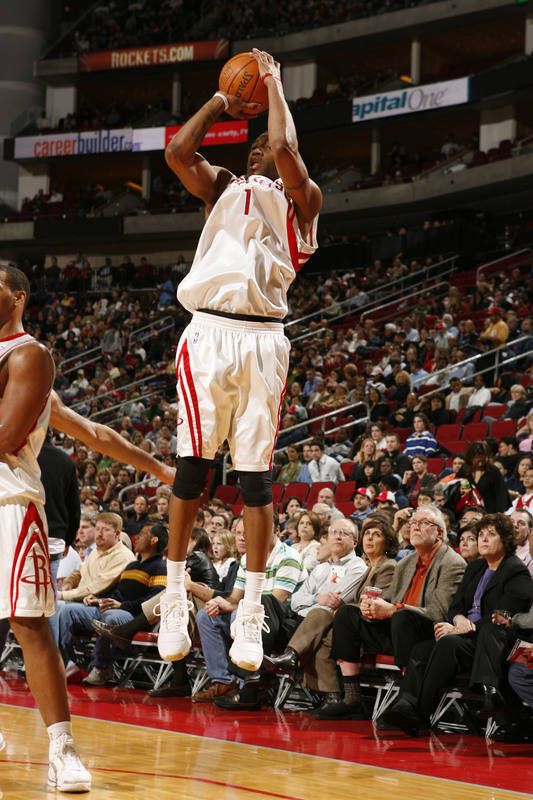
- Arms are at all times spread to about shoulder-height, and once you move within a little more than an arm’s length of your opponent, raise your arms above your head to allow for a quicker response.
These guidelines describe an optimal defensive stance to be in for effective shot-blocking, be sure to make use of them both on and off the court to adapt yourself to be in that pose.
3. Anticipation
This is where the mind games come to play as your opponent begins to fake you out in an attempt to catch you off-guard and shoot the ball. Even if the offense hasn’t tried it, it’s still important to keep watch so that if it happens you’re ready, but if they’ve already begun using these tools then expect them to use it again.
Here the best course of action boils down to both your practice and in-game experience with holding off shots as well as your relative knowledge on the offense, which includes how aggressive their play style is and how often they use fakes.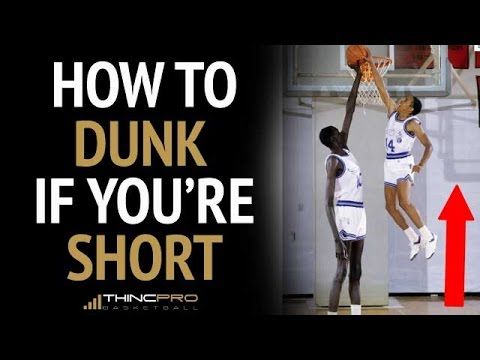 That information can tell you a lot about how likely they are to perform more fake outs.
That information can tell you a lot about how likely they are to perform more fake outs.
This is more so a gradual step that you’ll begin to understand and grasp not just over time but more specifically over the course of the game as you begin learning more about the opposing players.
However, your opponent isn’t the only one that can use this trick; you can also perform a fake to apply even more pressure to the offensive player. Once you’re within arm’s reach, you can fake your jump by simply extending your arms up and down.
This can prove to be an effective way of stopping the shooter dead in his tracks and even throwing off his rhythm by getting him thinking about when you’ll actually jump, all without having to get off the ground.
4. Blocking
Once the shooter releases the basketball, have either one or both of your arms completely extended and use your hands to obstruct the basketball’s path. You may either keep your arm straight and let the basketball come down towards you for a steal, or you can swat the basketball and throw it off course.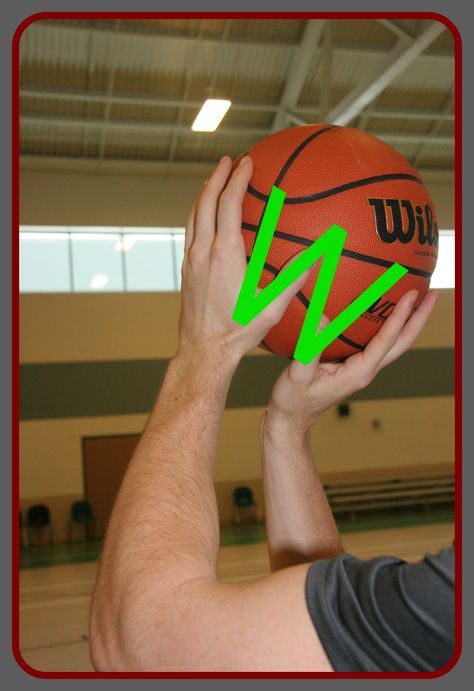
If you do swat the basketball, be wary of where you’re directing it towards; if possible, aim it towards a teammate so that your team can steal the ball.
Be careful when reaching in the for basketball to avoid getting a contact foul, and if the ball is already on its way down or descending relative to its arc, don’t alter the shot as that’ll be considered goal-tending and will automatically be counted as having been made.
Avoid incurring a basket interference violation by being cautious whenever you get close to the rim. In the case of blocking a dunk, whether you should go for it or not depends on how well the person you’re defending knows how to dunk, but generally, it’s best just to provide pressure and contest the dunk.
In the case that you’re trying to avert the shot of someone taller than you, there’s little chance of you successfully carrying it out unless you have a high enough vertical jump, in some cases a record-high jump, so just try and contest it to put pressure on the shooter and hopefully throw off his aim.
Practicing Blocking
(Keith Allison from Baltimore, USA, Bryant Fades Over Butler, Cropped by BallAmazingly, CC BY-SA 2.0)
Of course, the best way to become a better shot-blocker is to prep for in-game experiences with practice drills on the court where you defend another person and try to stop their shots. This works incredibly well towards improving your shot-blocking capabilities and making you a better defender overall.
Recap
When shot-blocking in-game, be sure to:
1. Determine whether the shot is worth deflecting relative to the player shooting and their location.
2. Keep up to pace with your opponent’s movement while in a defensive position.
3. Anticipate some type of fake to be able to deal with it, and dish out tricks yourself.
4. To repel the projectile extend one or both arms and obstruct the path of the ball with your hand.
When you’re going to alter the shot, be sure to avoid:
1. Rushing, don’t go ahead of your opponent and don’t lag behind either.
2. Contact foul, try and avoid all contact with the shooter when trying to stop their shot.
3. Goal-tending & interference, if the basketball is on its way down or descending relative to its arc, leave it alone. If the basketball is anywhere near the basket, be cautious in your approach.
Hopefully, this should all give you a better idea as to how to properly go about repelling a projectile in-game. Remember that in general, being a good shot-blocker can prove to be hard even for the best players in this area, so don’t feel too bad if you only get one or two blocks per game.
A. Ya. Gomelsky about strategy and tactics in basketball
copies of swiss watches
Strategy is the main theoretical direction of the entire work of the team, which determines the means and methods of preparation for the main competitions. Four-year plan for the preparation of the USSR national team for the Olympics in Seoul - the strategy of the team in 1985-1988. The strategy also provides for the management of the team during the competition.
The strategy also provides for the management of the team during the competition.
Tactics is a part of the strategy that solves the main tasks of training, taking into account specific capabilities - team resources, characteristics of opponents, competition conditions. All this determines the tactical and combination baggage of the team.
When choosing tactics of the game (attack), one should proceed, firstly, from the real capabilities of the players, taking into account, first of all, their strengths, for the disclosure of which combinations are built and learned. Secondly, attack tactics are determined by the strength and weakness of a real opponent in a tournament, match.
I usually discuss playing combinations with the players for whom this combination is designed. I know the strengths of my players, but the players themselves know them even better and can make significant adjustments to the combinations I have proposed.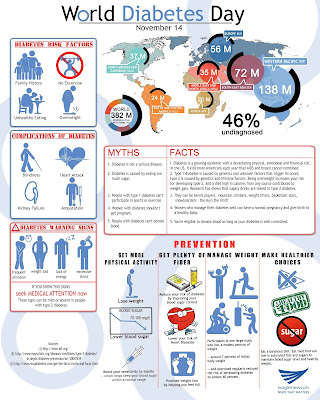
A.Ya. Gomelsky about playing defense
I believe that defense is the main concern of the coach: firstly, because the victory of the team largely depends on its strength, secondly, because the attack starts from the defense, like from the stove, in- thirdly, because the players themselves never work on the elements of protection, and finally, because the audience, as a rule, does not see it, even journalists often underestimate it.
The best team cannot win without a solid defense. Team defense is built on the individual characteristics, capabilities and mood of all players. Often in training, and even in competitions, individual players show indifference to defensive actions. It always bothered me and even angered me. Yes, the menial work on defense isn't that spectacular - except for things like block shots, rebounds, interceptions.' And many players are not aggressive on defense, they are resting on defense, trying to prove themselves in attack.
I am sure that without great desire, responsibility, initiative, passion, it is simply impossible to defend today.
If the defender allowed the attacker to receive the ball in the danger zone, he has already lost. And how many cases when the center is allowed to receive the ball in the three-second zone under the shield, without striving to actively fight for an advantageous position.
Often defensive players are in no hurry, they do not concentrate their attention and efforts enough on this part of the game.
I want to emphasize that the psychology of defense is one of the most important concerns of a coach, and often more depends on the focus on defense than on technique and physical condition. Doesn't the ability to intercept the ball and win the rebound depend on the mind and the ability to calculate one's strength? If a player goes to intercept the ball, exposing his rear, and slips past the ball, is this not the result of poor calculation, inability to predict, anticipate the situation, think and act responsibly? All this is the psychology of protection.-Step-5.jpg/aid43486-v4-728px-Play-21-(Basketball)-Step-5.jpg)
I believe that a player who is weak and inept in defense causes more damage to the team than a player who is weak in attack. The definition of "good defense is head and legs", while still valid, is incomplete. Fast, tenacious, active hands that can both hit and intercept the ball, and prevent a throw, pass, kick the ball while dribbling - are no less important for a defender
Counterattack
Counterattack is the most spectacular and quick use of all opportunities to achieve result.
Fast play requires high technique. The desire to play at high speeds is commendable and acceptable only if the speed does not exceed the state of the art. Otherwise, there will be more mistakes, losses of the ball than achievements. Therefore, in an effort to prepare a fast break, it is necessary to train the execution of all technical elements at high speeds, using both active and passive resistance of defenders in situations 1-1, 2-1, 3-2, 4-3, 5--4 and with numerical equality.
My idea of a counter-attack is not only to move quickly towards the opponent's backboard, but also to quickly transfer the ball to the opponent's backboard with sharp passes, or, if there is no free recipient to receive the ball, by dribbling the ball, actively moving forward. In the final stage of the fast break, players strive to create a triangle in the front line of attack with the apex on the free throw line. There should be a player with the ball, and two other players - to the left and right of him, 4-5 m ahead.
A counterattack is possible in the following situations:
1) when intercepting the ball;
2) when taking a rebound on his shield;
3) after the opponent has made free throws;
4) after winning a dropped ball;
5) after the opponent manages to score the ball.
The best outcome of a fast break is taking the opponent's ring with a numerical advantage, when implementing situations in numerical equality: 1-1, 2-2, 3-3, 4-4. This is easier than beating a 5-5 defense that has already built up its defensive formations.
This is easier than beating a 5-5 defense that has already built up its defensive formations.
There are three phases in a counterattack that are equally important for success:
1) the beginning of a fast break - picking up the ball, first pass, movement of the players, their start;
2) the middle stage of the development of the attack - the transition by the players of the middle line of the field, their advancement;
3) completion of the attack - passing the ball at speed and throwing in close proximity to the backboard.
The timing of the "rehearsed fast break" depends on the speed of the players, the ball passes and the finishing shot. The USSR national team spent 5-7 s on a layered fast break. I think that the schemes of her tactical formations will provide great opportunities for the creativity of coaches working with any teams.
Playing in the USSR national team such powerful and tall centers as A. Sabonis and V. Tkachenko made it possible to carry out a counterattack through one long pass across the entire court.
Center #5, after recovering the ball from the backboard, passes it to runaway #2.
Such an attack was especially successful when building a zone or mixed defense, when one of the defenders or wingers playing in the front line of defense was given the task of running away at the moment of throwing at our ring, in the expectation that the giants would be able to take possession of the ball , bouncing off the shield, and make a long pass across the entire field. Naturally, such a system of counterattack requires special coordination of actions, and its development takes considerable time in the training process.
Development of a quick counter-attack through the middle of the field.
Players #5, #4, #3 are fighting for the ball and, having mastered it, they try to make the first pass to player #2, who passes the ball to player #1. Player #1 rushes forward dribbling through the middle of the court. Players #2 and #3 overtake the dribbler at high speed, form a triangle with #1, and finish the attack with a close range throw if they manage to create a numerical advantage under the opponent's shield.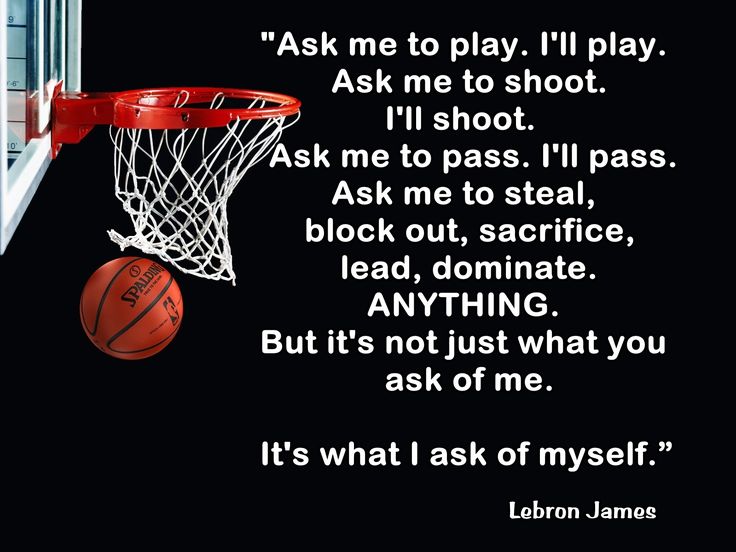
If it was not possible to complete the attack in the first echelon, then the second echelon comes into action - center players #4 and #5. They, each on their own side of the court, rush to the opponent's shield. The one on whose side the ball is on ends the attack.
Development of a fast sideline break.
On a rebound from the left side of the backboard, the post makes a quick pass to player #2, who opens to receive the pass to the sideline, just above the free throw line. At the intersection of the sideline with the center, player #1 receives a pass from player #2, then passes it to player #4, who rushes forward on the left side. Player #4 has three possible continuations of the attack: give the ball to player #5 or #3, who is running towards the opponent's backboard in a straight line, or pass to player #2 in the area of the arc. It is clear that the transfer should be made to the most open player, who is in the most advantageous situation.
A similar situation occurs when attacking on the opposite side.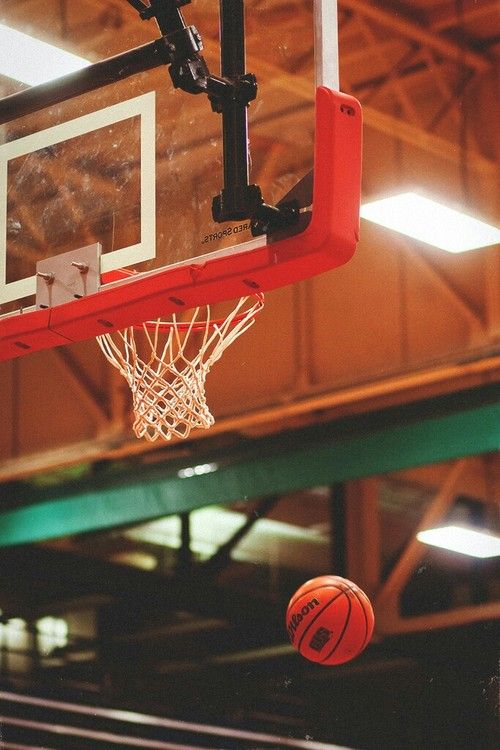
Development of a fast break after a free throw into our ring.
If player #4 catches a bounce or quickly clears a potted ball from behind the endline, the first pass is to the left sideline to player #1 opening at or slightly above the free throw line. Player #2 opens near the center circle, receives the ball and dribbles forward. Players #5 and #3 pass the dribbler along the touchlines, player #4 overtakes him from the right, and player #2 stays slightly back in the backing position. Thus, player #2 has four options to choose the direction of the attack.
Same procedure as above, but after rebounding a field goal or after the ball is thrown in from behind the end line.
Developing a fast break after a dropped ball in the center circle or on the free throw line in our half of the field.
Player #5 discounts player #4 who is ready to receive the ball with his hands up. After catching the ball, #4 passes forward to player #1, who opens up to receive that pass after being screened by player #3. Players #2 and #4 support the attack. Such a combination can be played in both directions. At the heart of her success is high growth, good jumping ability and the ability to accurately throw the ball to the partner of the center player.
Players #2 and #4 support the attack. Such a combination can be played in both directions. At the heart of her success is high growth, good jumping ability and the ability to accurately throw the ball to the partner of the center player.
Same scheme, but now player #4 screens player #2 who, having received the ball from player #3, rushes forward.
The easiest way to complete a counterattack is for the players to take the shortest path to the opponent's shield. However, with the development of a counterattack, options are possible with cross screens
interaction like a trio
setting up screens for the players of the second echelon in the center of the field.
Many teams in the world, including the USSR national team, after they failed to complete the counterattack with a scoring throw, in the transition to a positional attack, spent precious time placing players, thus allowing the enemy to prepare for defensive actions and occupy all defenders advantageous positions.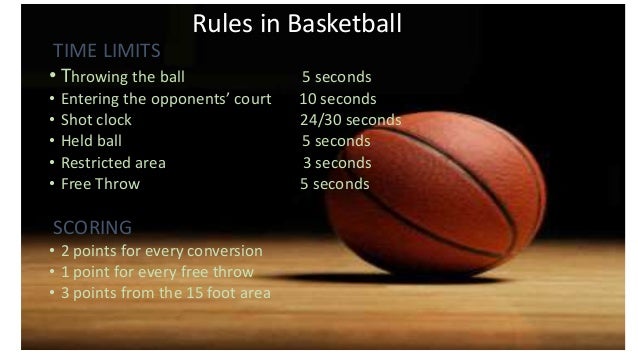 This is why a quick or non-stop attack after a counterattack ("transition game") is increasingly used in the tactics of the best teams in the world. I will give an example of such an attack in the USSR national team.
This is why a quick or non-stop attack after a counterattack ("transition game") is increasingly used in the tactics of the best teams in the world. I will give an example of such an attack in the USSR national team.
The fast break was not completed by the players of the first attack tier #2 and #3, nor the second tier #4 and #5. They, each on their own side, set up screens for fielders #3 and #2 for a shot from medium or long distance, and then go to the backboard to receive the ball in the three-second zone on the spot or to fight on the backboard, after a throw from one of the players # 2 or #3. Options for a non-stop attack can be very different. This could be a double or triple screen for the team's sniper, or a winger or post entering the 3-second zone after receiving the screen. It all depends on the characteristics and capabilities of the player for whom the combination is being made.
Double screen to Marciulionis (#2) to attack with his left hand from the free throw area.
Players #4 (Volkov) and #3 (Tikhonenko) simultaneously put up two screens for player #2 (Marciulenis). #2 breaks into the free throw line, where he receives the ball from player #1 (Sokka). "Marciulionis has opportunities to continue the attack:
a) receiving the ball in motion and passing under the backboard;
b) receiving the ball with a stop and shooting at ring;
c) passing the ball to player #5 (Sabonis) in case there is a switch of defenders.
Players #4 and #2 after screening go under the backboard to fight for the rebound.
Mixed defense
There are several systems of mixed defense:
1. Four players build a zone defense 2-2
or 1-2-1
capabilities and tactics of the opponent.
2. Three players build a 2-1 zone defense and two guard the enemy's strongest snipers.
3. One player completes the zone formation while four players cover the opponents personally.
4.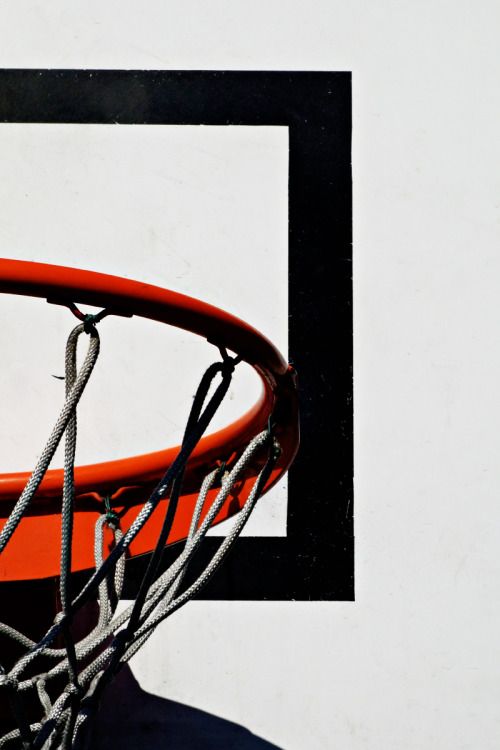 Two players form a zone defense and three players act as an individual defense.
Two players form a zone defense and three players act as an individual defense.
Mixed defense brought good luck to the USSR national team and the CSKA team more than once. The choice of defense has always been determined by the characteristics of the opponent and our capabilities.
In the final of the Olympic tournament in Seoul against the team of Yugoslavia, we used a mixed defense 1-4.
Sabonis played a zone defense, the rest of the players closely guarded their opponents. This was due to the presence of Vrankovic or Raja in the Yugoslav team, who are not very dangerous away from the shield, and the fact that Petrovich, Paspal, Kukoch posed a big threat. The players who guarded the leaders of the Yugoslav team could, with a greater degree of risk, fight with their opponents to get the ball. They knew that Sabonis would help them if they were beaten.
A similar defense was chosen in the semi-final tournament in Seoul against the US team. Sabonis did a zone defense and let Robinson or Reed or Maning shoot from wide. But the rest of the US players were completely covered, and a player like Maning did not bring a single point to the team. As a result, the USSR national team won 82:76. And Sabonis, who participated in the Olympics after a serious injury, two operations, took first place in the selection of balls from shields and made a great contribution to the victory of the USSR team.
Sabonis did a zone defense and let Robinson or Reed or Maning shoot from wide. But the rest of the US players were completely covered, and a player like Maning did not bring a single point to the team. As a result, the USSR national team won 82:76. And Sabonis, who participated in the Olympics after a serious injury, two operations, took first place in the selection of balls from shields and made a great contribution to the victory of the USSR team.
Sometimes, with two centers Sabonis - Tkachenko, we built a mixed, personally set defense 3-2. Two giants and one mobile defender played well in the zone. In the early 70s, it was Eremin, then Valters, and at the Olympics and the pre-Olympic tournament Sokk performed this function, and Belostenny and Volkov played instead of Sabonis and Tkachenko in Holland.
At the Seoul Olympics, we used such a defense (3 in the zone, 2 in person) against the Brazilian team.
Sabonis, Volkov and Sokk built a triangle on top of which Sabonis and Volkov played.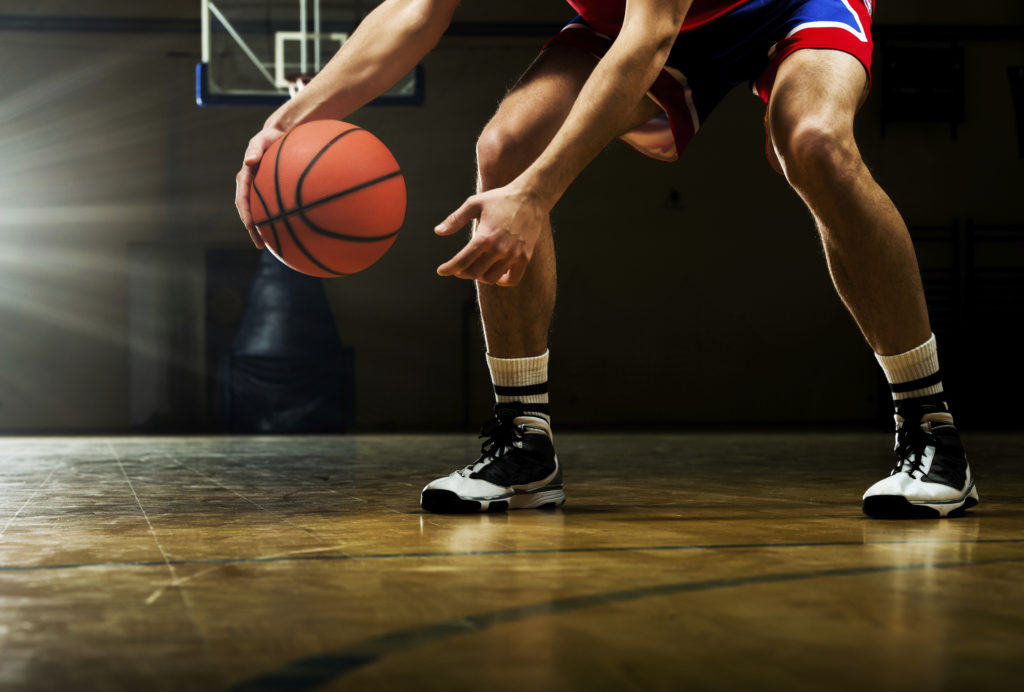 Tikhonenko took care of So-uzu personally, and Marciulionis took care of Schmidt, and although these two players scored 65 points together, the match turned out to be very difficult for us, but we still won 110:105. The mistake in the choice of defense was that Schmidt outplayed the smaller Marciulionis in different positions, and Souza outplayed the slower Tikhonenko. In the last 10 minutes of the match, Volkov was attached to Schmidt, Marciulionis switched to Souza, and we changed Tikhonenko to Goborov in zone defense.
Tikhonenko took care of So-uzu personally, and Marciulionis took care of Schmidt, and although these two players scored 65 points together, the match turned out to be very difficult for us, but we still won 110:105. The mistake in the choice of defense was that Schmidt outplayed the smaller Marciulionis in different positions, and Souza outplayed the slower Tikhonenko. In the last 10 minutes of the match, Volkov was attached to Schmidt, Marciulionis switched to Souza, and we changed Tikhonenko to Goborov in zone defense.
Benefits of mixed defense
allows you to fight with him to get the ball, while expecting the active help of teammates, without fear of a throw.
2. Such a system, if the opponent is not prepared for it, tactically introduces confusion and makes it difficult to carry out combinations of screens.
3. Combines the best aspects of individual and zone protection systems.
4. Promotes a quick transition from defense to counterattack.
5. Allows players to use their strengths defensively and not show their weaknesses.
Allows players to use their strengths defensively and not show their weaknesses.
6. Can take the point guard out of the game and deprive the opponent of the usual formation and rhythm, destroy the counterattack if applied pressure throughout the field.
Weakness of the mixed defense
1. A technically competent team that has several leaders easily rebuilds the offense and breaks the mixed defense.
2. Simultaneous movements of two or three players diagonally can destroy a mixed defense if the opponent manages to create a numerical advantage on one of the sides of the field.
3. Often vulnerable to medium throws from 3-4 m.
4. Requires special long preparation, coordinated actions, high teamwork of the whole team for rebuilding and interchangeability in positions.
5. If one of the five players did not have time to reorganize or did not cope with his duties, then the whole idea of such a defense breaks down.
A.Ya.

Gomel. Pressing defense
Pressing is the most active type of defense, constant pressure on the opponent. It can be personal or zone, it can start from the moment the opponent throws it: all over the court, on 3/4 of it, in their own half, i.e. on 1/2 site.
The goal of defense by pressing is not only psychological pressure on the opponent, but also the desire to break the opponent's established game, break his habitual connections between defense and attack, his combinations, make inaccurate passes of the ball, hasty - throws. It is impossible to apply pressure without mastering enough methods of individual protection. This form of defense requires high physical condition, good reserve and teamwork of all players and team units.
Pressing is used both as a system of play for long periods of time, and as a forced measure: when losing in a score to increase the pace or when waiting for pressure from an opponent.
By pressing, we try to take the ball away from the opponent - we force him to make false, inaccurate passes that are easily intercepted. Often, the opponents of the front line of pressing, having missed the opponents, do not pursue them, but watch the development of further events - this is a gross mistake. It is necessary to chase the player with the ball, trying to knock the ball from him from behind, stepping on his heels. Thus, you force the opponent to rush, worry, make mistakes.
Often, the opponents of the front line of pressing, having missed the opponents, do not pursue them, but watch the development of further events - this is a gross mistake. It is necessary to chase the player with the ball, trying to knock the ball from him from behind, stepping on his heels. Thus, you force the opponent to rush, worry, make mistakes.
If in zone or personal pressing you are left without a player and do not help a friend, you make a miscalculation. If one of the five pressers is not active, the work of the entire team goes down the drain. Pressing is primarily an active defense of the team.
In modern basketball, many coaches tend to believe that personal pressing is less effective, difficult, leads to a large number of personal violations and is inferior in usefulness to zone pressing systems. I also believe that a strong, technical player with good dribbling is able to cope with personal pressure.
In addition, with a stretched defense, it would be incredibly difficult to keep such players as Marciulionis, Volkov, Kurtinaitis, Petrovich, Schmidt, Kukach, Paspal, Rivier, Gallis one on one.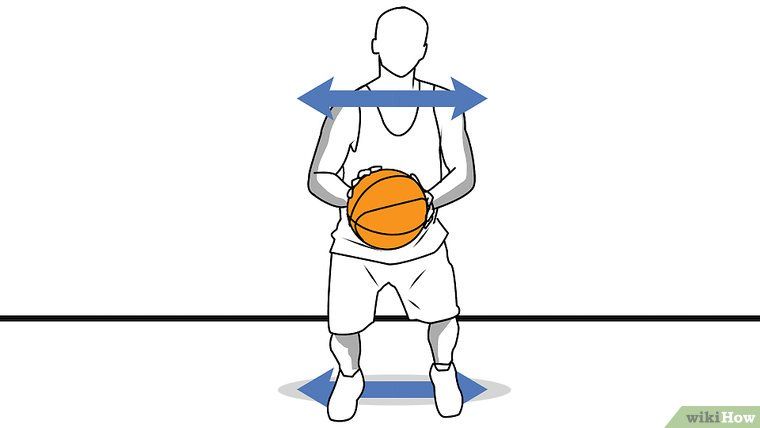 I'm not talking about NBA players. But although zone pressing has become more popular, it is impossible to do without the ability to play personal pressing. Therefore, it is necessary to train defense daily 1-1, 2-2, 3-3, 4-4 all over the court, with and without the ball, with and without dribbling, with and without screens, first at a walk, then at high speed.
I'm not talking about NBA players. But although zone pressing has become more popular, it is impossible to do without the ability to play personal pressing. Therefore, it is necessary to train defense daily 1-1, 2-2, 3-3, 4-4 all over the court, with and without the ball, with and without dribbling, with and without screens, first at a walk, then at high speed.
Exercises are useful in which the number of defenders prevails over the number of attackers. These exercises promote the interaction of the defenders, instill the skills of tackling the ball. They are also good for attacking players. When training personal pressing, due attention should be paid to the rapid movements of players in an active stance, in different directions, with a skillful change in the positions of players. Defenders of the first line of defense seek to push their attackers to the sidelines and prevent the attacker from getting around him with the ball and without the ball.
If one of the defenders managed to stop the attacker with the ball at the touchline at the intersection with the penalty or center line, the defensive partner must come to the aid of a friend: together they force him to make a cross pass, which the other three players are ready to intercept.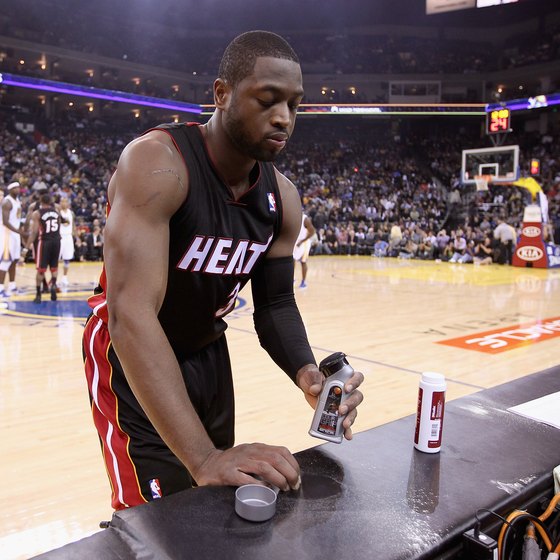
The initial stage of personal pressing is carried out by two fundamentally different tactical formations:
1. The opponent who introduces the ball into the game holds a high moving edge and with an active movement of the hands prevents him from making an aimed pass.
2. No one guards the opponent who puts the ball into play, but two pressers prevent the most dangerous dribbler from getting the ball.
For example, Volkov secured Sokk and Marciulionis from behind when passing to player 5.
A few tips when defending with personal pressure: make him stop and do not let him make an accurate pass, interfering with his hand movements;
2) if the defending partner allowed himself to be bypassed, immediately come to his aid, of course, without leaving your ward in a safe position under the shield;
3) constantly watch not only your ward, watch the actions of partners, learn to see the whole field.
In the USSR national team and CSKA, zone pressing 1-2-1 - 1 brought us the most success. We started pressing from the opponent's front line after a goal and a free kick. High extreme Volkov interfered with the throw-in. If the ball was injected to the right, Marciulionis and Volkov attacked X2 defender together, trying to prevent him from going forward and make an aimed pass to XI defender, Sokk followed the movement of X3 and X4. Sabonis secured the rear, was responsible for long passes and for the X5 player. Tikhonenko in the center of the field followed X4's pass with a long pass and went to the ball passing side.
We started pressing from the opponent's front line after a goal and a free kick. High extreme Volkov interfered with the throw-in. If the ball was injected to the right, Marciulionis and Volkov attacked X2 defender together, trying to prevent him from going forward and make an aimed pass to XI defender, Sokk followed the movement of X3 and X4. Sabonis secured the rear, was responsible for long passes and for the X5 player. Tikhonenko in the center of the field followed X4's pass with a long pass and went to the ball passing side.
Returning with a weak attack, we built a defense 2-3
Zone defense in basketball
The meaning of this defense is that the players are in charge of a certain area of the field, in accordance with the position of the ball and the formation of the attacking team.
Benefits of zone defense:
1. Gives the opportunity to arrange players according to their physical, technical and mental characteristics.
Tall, jumpy players are located close to the shield, mobile, fast players - in positions higher from the shield.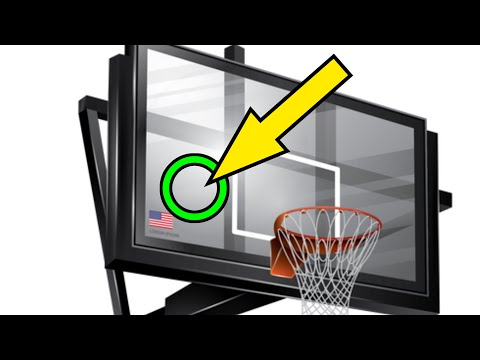
2. More commanding, easy to master, able to compensate for the individual gaps in the defense of the players.
3. Promotes counter-attacking and frequent interceptions of the ball with the greatest possible degree of risk, because. Partners are always ready to help.
4. The number of fouls in a zone defense is usually less than in a personal defense.
5. This defense is less vulnerable to screen combinations.
6. Can concentrate with strong opponent centers and stretch with snipers.
7. More than personal protection, it saves players' strength and protects leaders from fouls.
8. Most effective against opponents with strong centers.
9. A team that owns a zone defense can easily build mixed forms of defense: 3-2, 4-1, 2-3.
10. Convenient and suitable for small fields.
Disadvantages of zone defense:
1. Inferior to the personal psychological responsibility of the players, their charge for individual victory in defense.
2. Less useful against teams with strong snipers.
3. As a rule, the corners of the court are less protected in zone defense.
4. Zone defense can be used occasionally and should not be the main form of defense. It is not advisable to use zone defense at the beginning of the match, when the opponent's players are not yet tired, energetic enough - their throws are more accurate and productive than at the end of the game.
There are several formations of the zone defense, however, each of the zone defenses should easily transform depending on the attack - stretch when attacking from a distance and group around the ring.
Even type of zone defense formations includes systems: 2-2-1, 2-1-2, 2-3.
Odd formation: 1-2-2, 1-3-1, 3-2.
Each of these constructions has its advantages and disadvantages, which are useful to analyze.
The arrows indicate the direction of movement of the players. The shaded places on the court are the weak positions of the defense.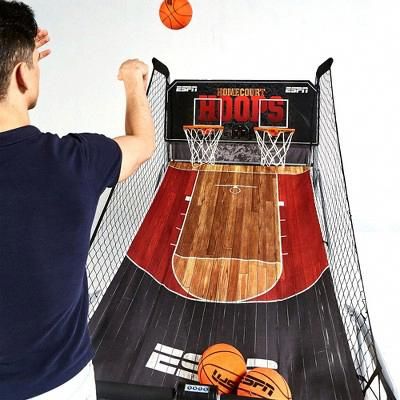
Zone defense 1-2-2
#1 - the lightest, fastest defender, #2 and #3 - quite mobile, jumpy, good if their height is at least 2 m. #4 and #5 - centers. Their task is to fight with the opponent's centers, picking up balls from the shield.
This system is most useful against teams trying to attack from under the shield through the post. Disadvantages - weak positions indicated in the figure.
Zone defense 2-1-2
It is used against strong opponent's centers who are dangerous on the "second floor" when rebounding the ball. Good for developing a counterattack with fast #1 and #2 players. Vulnerable in corners under 45, in the center for long and medium throws. The task of post #5 is to mark the opponents' post and, together with ?3 and ?4, create a rebounding triangle. #3 and #4 are mobile and high wingers, they can be swapped depending on the place of the sniper's attack.
Zone Defense 1-3-1
Helps to keep #3, #5, #2 between the ball and the basket at all times, used against opponent's strong centers and shots from middle and close positions.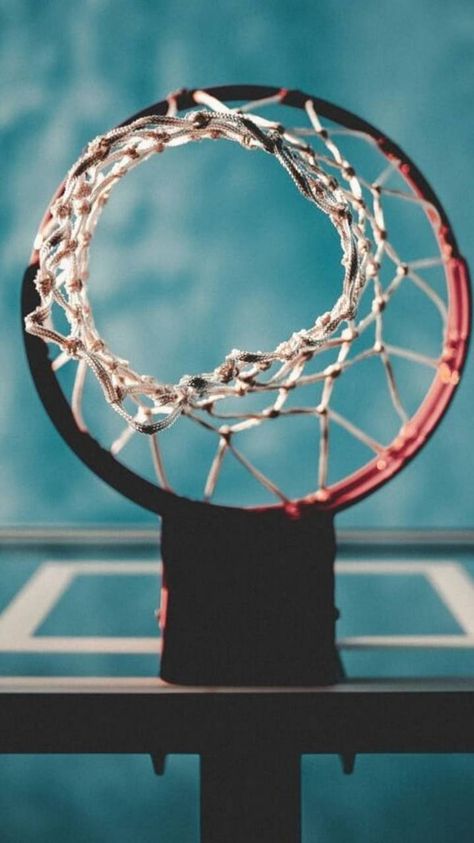 Her weakness is throws from the corners of the site and passes to the shield along the front line.
Her weakness is throws from the corners of the site and passes to the shield along the front line.
#1 - the fastest defender, running into the gap in every possible situation, #2 and #3 - mobile, jumping players, #5 - center, #4 - the fastest winger, able to move into the corners of the court.
Zone defense 3-2
#1, #2 and #3 are aggressive, mobile players, the success of the whole system largely depends on their activity. All three are focused on intercepting the ball and counterattacking. This system is most acceptable against teams seeking to attack from a distance, and less suitable against strong centers. The 3 second zone and 45 angle positions are the most vulnerable. #1 is in charge of the foul line. #2 and #3 are in a rebound fight. #5 and #4 are the first and second centers.
Zone protection 2-3
Strongest under the backboard, in the corners of the court along the front line. It is used against a tall, powerful team attacking from close positions and from under the shield. Often used for group selection of the ball in the corners of the court. When interacting #4 and #2 or #3 and #1, the defense is less effective on the foul line and at a 45 angle. #5 - center, #4 - second center, #3 - winger, #1 and #2 - defenders, constantly aimed at interception and counterattack.
Often used for group selection of the ball in the corners of the court. When interacting #4 and #2 or #3 and #1, the defense is less effective on the foul line and at a 45 angle. #5 - center, #4 - second center, #3 - winger, #1 and #2 - defenders, constantly aimed at interception and counterattack.
Zone protection 2-2-1
This defense is used by agile and short teams aiming to intercept the ball and constantly counterattack. This zone counterattack is used against teams seeking to attack from medium distances. Center #5 is responsible for rebounding, wingers #3 and #4 are responsible for positions in corners and under 45 , rebounding the ball and for the foul line.
Defenders #1 and #2 tend to close the passes to the shield and into the three-second zone, while they themselves are constantly aimed at counterattacking.
A.Ya. GomelskyDefense against ball carrier
It is necessary to work out the correct body position in a basketball stance: the center of gravity is evenly distributed on both legs, but not on a full foot, but on toes, with a "charged" (ready for any movement) foot, knees slightly bent, legs slightly wider than shoulders .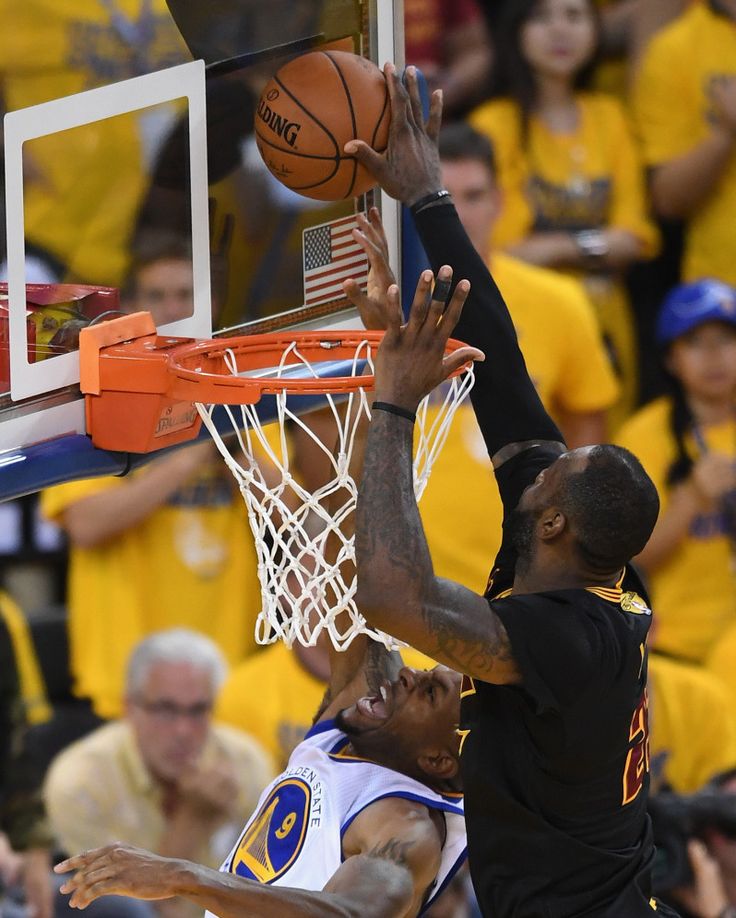 Boxing stance - like the great Michael Jordan.
Boxing stance - like the great Michael Jordan.
If the opponent is in possession of the ball, one arm of the defender must be directed at the ball and constantly attack the opponent, preventing him from aiming or throwing (best if it touches the attacker), and the second arm slightly pulled back. Many defenders, being between the player with the ball and the basket, even in the correct stance, do not actively use their hands, do not make an offensive movement towards the attacker, which allows the opponent to calmly take further actions. At the same time, it must be remembered that you cannot cross your legs, that the distance between the defender and the opponent must be calculated so that the opponent can pass with a dribbling to the ring.
Contact defense against the ball carrier, although difficult and somewhat risky, is modern and has its advantages. If your arm extended to the opponent reaches his chest, then by doing so you prevent the attacker from lifting the ball up for a throw.
Defender's movements should be trained regularly:
a) in each training session - with and without resistance;
b) with one or two balls;
c) with side steps, making contact with the body closest to the attacker.
The defender's actions in different situations can be divided into 12 positions:
1. Defense against a dribbler driving the ball to your ring.
2. Defending against a player who has finished the dribble and is looking to either shoot or pass.
3. Defense against an attacker 5-6 m from the backboard, but not using the dribble.
4. Actions of defenders in numerical minority.
5. Actions of two defenders against three forwards.
6. Actions of three defenders against four forwards.
7. Actions of defenders during screenings.
8. Rear screen protection.
9. Slip protection.
10. Group ball tackle by two defenders.
11. Defense against the first pass to the counterattack.
12. Fighting the attacker in the corners of the court.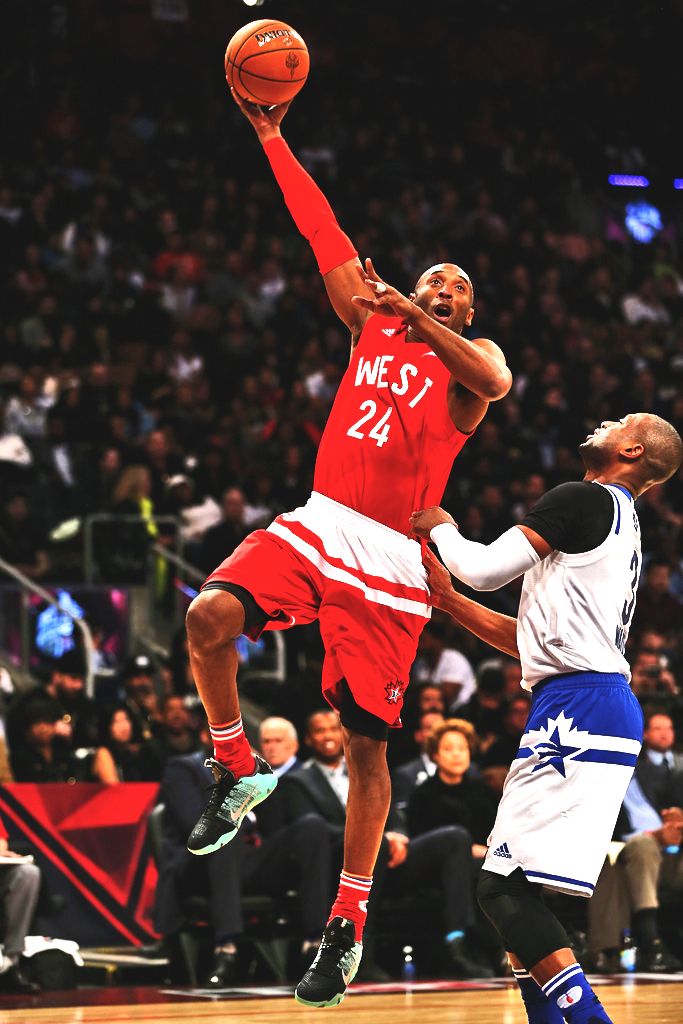
Let's try to analyze the defender's actions in each of these positions.
1. Defender's task - in a parallel low stance, without crossing the legs, move backwards, knees slightly bent, one hand all the time makes attacking movements towards the dribbler (feints with the body and head participate in this frightening dribbler movement), with the other hand he tries to stop the dribble (if possible, knock the ball out). The raised hand is ready to prevent the presenter from making the pass. Hands can be changed, they are always in motion.
As already mentioned, one should move on a "charged" foot, the heels do not touch the floor, the back is straight, slightly tilted forward, the head is raised up.
The leader should be pushed to the sideline, in the corner of the court, or his movement should be directed towards the defensive partner, remembering that the leader must not be allowed to go to the "strong" side (if left-handed - to the left, if right-handed - to the right).
The distance from the leader should be maintained depending on the speed of his rushing with the ball, his ability to attack or pass, as well as your ability, taking into account the position on the field of defensive partners. Do not rush to take the ball away from a good dribbler, wait for him to stop or make a mistake.
2. If the attacker has finished dribbling and has stopped to shoot or pass the ball, the defender must definitely get close to him, actively using his arms, preventing him from concentrating on the next action. The hand closest to the opponent must touch the fingers of his chest or stomach and not allow him to lift the ball up to attack the ring or pass. The defender seeks to force the opponent to turn his back to the shield and, without stopping attacking the attacker, prevents him from making an aimed pass. The defender must signal to his defensive partners to be ready to intercept the ball. These are already team actions.
3. If the opponent has received the ball 5-6 m from the backboard and he is in possession of the dribble, the defender must not stop actively attacking the attacker; make short lunges with your front foot, use your hands to prevent him from aiming.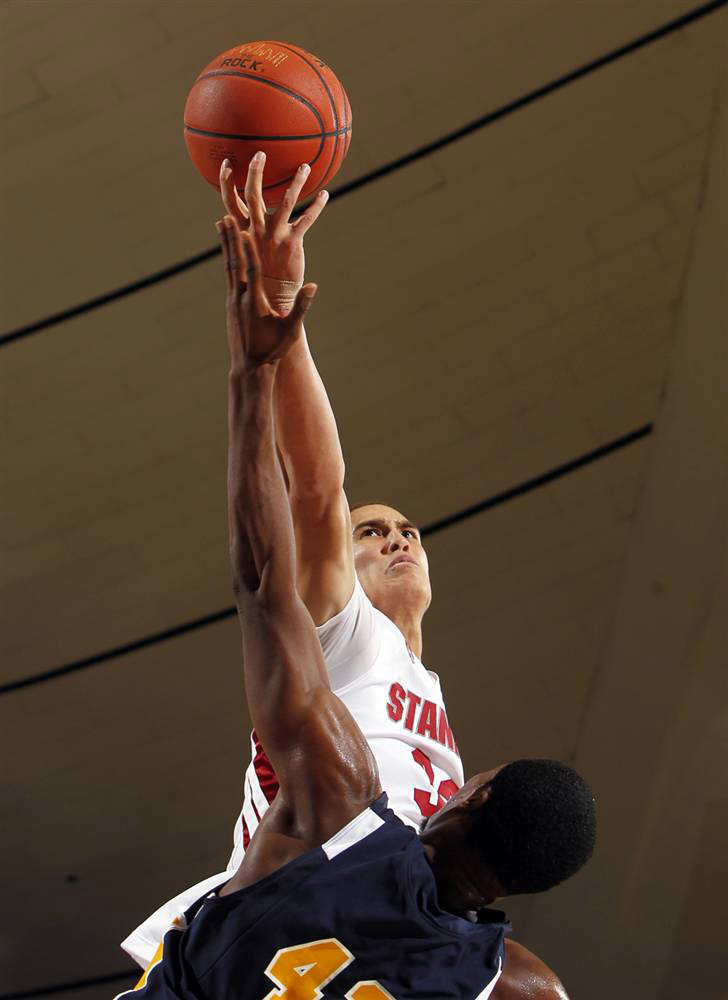 The attacker cannot be missed to the shield along the front line, if he moves slightly towards it, none of the partners will help the defender. The hand close to the end line insures the passage with the lead, the other one attacks the attacker.
The attacker cannot be missed to the shield along the front line, if he moves slightly towards it, none of the partners will help the defender. The hand close to the end line insures the passage with the lead, the other one attacks the attacker.
Do not give in to feints. If the attacker went to the end line where the defender took up position, you can meet him with his chest and show the referees that he knocked you down. Don't be afraid and learn to fall gently on your back.
If the attacker, despite the activity of the defender, lifted the ball for a throw, you should try to jump with him and prevent the throw. Do not stop working even when the opponent has already made a throw or pass. Do not turn away from him and block his path to the shield. When you take a step back, meet him with your face, and do not try to run after him. You should always be in these moments between the opponent and your shield.
4. If the defender is alone against two attackers, he tries to prevent the ball from being thrown from under the backboard and retreats with his back to his ring so that he can see both attackers. With false movements, he tries to stop the player with the ball and prevent him from making a pass to the opponent under the ring or in time for him in order to block the throw from a distance. Not allowing the ball to be thrown from under the shield, the defender will fulfill his mission.
With false movements, he tries to stop the player with the ball and prevent him from making a pass to the opponent under the ring or in time for him in order to block the throw from a distance. Not allowing the ball to be thrown from under the shield, the defender will fulfill his mission.
2x1 training on the spot and on the move develops reaction in defenders, teaches active arm movement, backward movement, composure and ability to intercept the ball.
5. Two defenders against three forwards - a common situation in any match, so the defenders, regardless of their position, being in the minority, must know their maneuver.
The front defender moves towards the dribbler to stop him at the top of the three-point offensive zone. He uses a feint, showing that making contact with this attacker is his main real task. At the same time, he should not get close to the opponent leading the ball. The rear defensive player takes a position on the free throw line, behind the front one and, after the pass from the dribbler, moves towards the player who received the ball - he is responsible for passing this player to the backboard or throwing from close range. The front defender, meanwhile, quickly moves to the third striker under the shield, managing to prevent him from getting the ball. The task of the two defenders is to prevent the ball from being thrown from under the shield. Exercises 3x2, 4x3, 5x4 are a good school for practicing such actions. You can train them by attacking with two balls.
The front defender, meanwhile, quickly moves to the third striker under the shield, managing to prevent him from getting the ball. The task of the two defenders is to prevent the ball from being thrown from under the shield. Exercises 3x2, 4x3, 5x4 are a good school for practicing such actions. You can train them by attacking with two balls.
6. If three defenders are defending against four attackers, their actions are built as follows. If attacker XI has the ball, defender ?1 rushes towards him, defender ?2 is responsible for throwing and moving to attacker XZ's shield, defender ?3 moves to the shield. If attacker X2 receives the ball, defender ?1 tends to it. Defender ?3 is responsible for attacker X4, defender ?2 moves to the basket.
A 4x3 drill on the spot and on the move, with rebounding the ball after a throw, with one and two balls - a good rehearsal for a defense of three against four.
7. Today, not a single even very serious team imagines an attack without a combination of screens.
Coordination of actions of the team's defenders, warning about the impending screen determine the preparation of the team to fight the screens.
The guard guarding the screening player must warn his partner of the imminent threat. If the screen without the ball is made by attackers of the same height, there is no great danger of changing the defenders.
If the defenders want to avoid changing when screening from the side, the defender must turn towards the defender and step back, bypassing him from behind, which will not allow the attacker to pass to the backboard.
If the attacker screens from the blind side, from behind, the defender must open towards the defensive partner, turning sideways to him. This will make it difficult to set up a barrier.
8. If your partner puts a screen on the sniper when attacking from medium or long distances behind the defender and you did not have time to get out from under such a screen, a change is necessary: your partner switches to the sniper with his hand raised and prevents him from making a throw. You are left with a dangerous, taller opponent, and your task is to prevent him from getting the ball or picking up the ball after the throw.
You are left with a dangerous, taller opponent, and your task is to prevent him from getting the ball or picking up the ball after the throw.
It is difficult to do without the help of partners in this situation. In general, I am a supporter of the smallest shift with screens, because. this reduces individual responsibility and gives the attacker a chance to beat the defender.
9. If your player, while in possession of the ball, seeks to pass to a teammate who is close to him, you must step back and allow your defensive partner to slip, and then take an active position towards your attacker.
10. The defensive player should always try to get the dribbler to the touchline, into the corner of the court, stop him and turn his back to the backboard.
The second defender, seeing this situation, attacks the opponent with the ball from the other side. Both of them with active hand movements interfere with making an aimed pass. It is important that the rest of the defense players are ready, focused on intercepting the ball.
11. The USSR national team used the defense against the first pass in a fast break more than once against opponents who counterattack through a fast dribbler, sending him the first pass after picking up the ball from the backboard. So we often defended against the Spanish national team, where the ?1 dribbler was Carbolan or Salosobal.
Our team's tall center, who plays close to the backboard, whether it's Tkachenko, Sabonis or Belostenny, prevents the dribbler from making an accurate first pass. At the same time, our fast defender, for example, Homichujus, presses ?1 opponent and does not allow him to receive the ball. The other three of our players were to immediately return to their zone.
So often the counterattack of the Spanish national team failed, in which the Spaniards were especially dangerous and productive.
I must say that there are some significant differences between the game of our and American defenders. According to my conclusions, they are:
1. Americans on the defensive are always offensive, they are not afraid of a contact attack on the attacker in possession of the ball.
Americans on the defensive are always offensive, they are not afraid of a contact attack on the attacker in possession of the ball.
In a low stance with arms raised, the US defender seeks to hit the ball, prevent a pass from being made, not to mention a shot. If the attacker lifts the ball up, the defender immediately reacts to this: his hand rises up and seeks to interfere with any actions of the attacker. The attacker put the ball down - the defender immediately takes two quick steps back, preparing to prevent the opponent's pass without losing his defensive stance.
2. When active, the American defender never allows the attacker to pass with the ball through the center, into the middle, but constantly pushes him to the sideline. When an attacker is missed on the front line, teammates immediately come to the aid of the defender. Our tactic is, on the contrary, to close the baseline, where, as we believe, it is more difficult to provide team assistance. I think it's best to find a compromise here: train the safety net both in the middle of the three-second zone and when passing on the front. And in games, take into account the characteristics of attackers under guard, do not let them go in their favorite directions (left hand, favorite throw point, feints, etc.).
And in games, take into account the characteristics of attackers under guard, do not let them go in their favorite directions (left hand, favorite throw point, feints, etc.).
3. When screening, the American defender's first impulse is to pass behind his player. With a quick movement of the foot close to the screener, he tries to get ahead of the screening and stay with his ward, and if this fails, a change of attacking players follows. This does not reduce activity.
Cut-off as one of the most important aspects of basketball defense
Introduction. The importance of defending against offensive shots in basketball is obvious. In this case, various methods of countering the defender and the attacker are used. The goal of the attacker is to make an aimed throw at the ring from one position or another, and the goal of the defender is to prevent this in every possible way, preventing foul (penalty). The paper considers one specific type or method of defense, called in basketball cut-off or cut-off . Namely [1, 3], cut is an instant action aimed at interrupting the opponent's path and reducing his ability to get to the ball. The paper considers a certain technique for training this method of defense in the physical education lessons of university students specializing in the game of basketball .
Namely [1, 3], cut is an instant action aimed at interrupting the opponent's path and reducing his ability to get to the ball. The paper considers a certain technique for training this method of defense in the physical education lessons of university students specializing in the game of basketball .
Clipping as the main method of protection. Let's look at some of the main ways a defender cuts or cuts off an attacking player. It is known [1-3] that the optimal position for cutting off by the defender of the player of the opposing team to prevent him from performing an attacking throw on the ring is the line in which collision fouls or picking up the ball after the throw are not recorded. personal fouls are called collision. During a basketball game, when 10 players move around the court at high speed in a limited space, personal contact cannot be completely avoided . According to the rules of the game of basketball [4] a personal foul is a foul against a player due to contact with a player from the opposing team.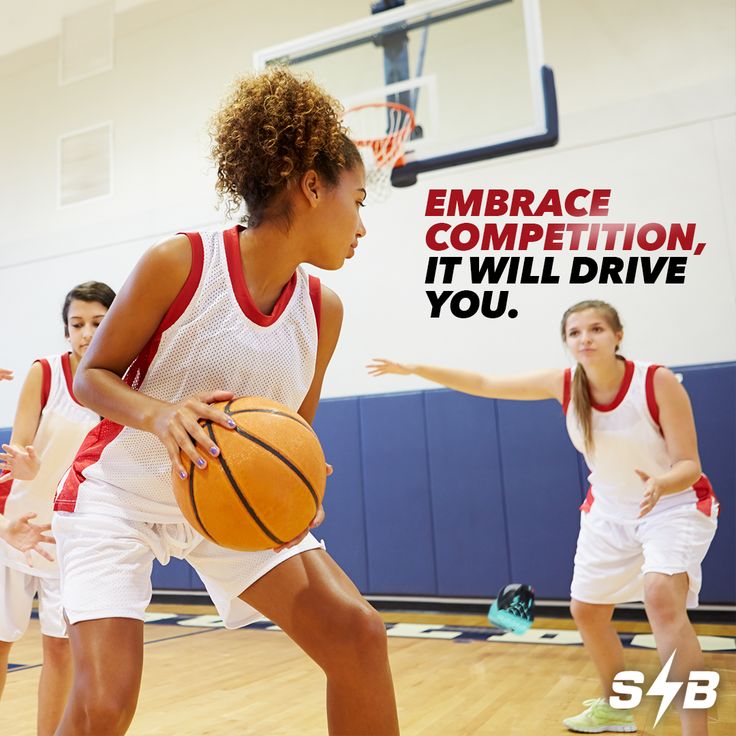 A player must not block, hold, push, run into, trip, or impede an opponent by exposing an arm, shoulder, knee, hip or foot. Personal foul - punishment in basketball. Remark to the player, recorded in the protocol, for a mistake when contacting an opponent. Depending on the nature of the error, the degree of punishment is different - from throwing in the ball by the injured team from behind the sideline to 3 free throws. Thus, the optimality criterion for cutting off is maximizing the possibility of intercepting the ball when passing it to your opponent or simply depriving it of a pass and minimizing the probability of getting a personal foul.
A player must not block, hold, push, run into, trip, or impede an opponent by exposing an arm, shoulder, knee, hip or foot. Personal foul - punishment in basketball. Remark to the player, recorded in the protocol, for a mistake when contacting an opponent. Depending on the nature of the error, the degree of punishment is different - from throwing in the ball by the injured team from behind the sideline to 3 free throws. Thus, the optimality criterion for cutting off is maximizing the possibility of intercepting the ball when passing it to your opponent or simply depriving it of a pass and minimizing the probability of getting a personal foul.
Interception triangle. Let's consider one method of protection based on clipping, and which is called interception triangle. The interception triangle is the player's position on the court that maximizes the ability to intercept the ball when passing to your opponent or simply close it from a pass.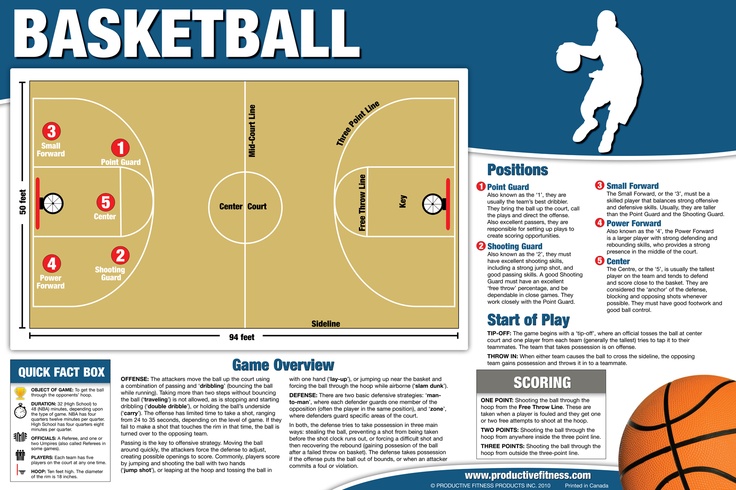 For this player, you need to draw a conditional line between the player with the ball and your opponent. Take a position between them. Near pass should be closed tighter (picture) [3].
For this player, you need to draw a conditional line between the player with the ball and your opponent. Take a position between them. Near pass should be closed tighter (picture) [3].
Fig. Interception triangle
In this case, the white player with his right hand prevents the opponent from receiving the ball. If the opponent starts moving, then you just need to retreat along the triangle line to the right place - again, to close the transfer line. The interception triangle provides an opportunity to completely cut off a player from receiving the ball, which is especially effective against individually strong attackers. With the help of the interception triangle, it is easy to provoke a loss: it is enough to simply step back from the attacker and free the passing line for a second, provoking a pass, and then intercept him with a sharp lunge. It seems to the authors that such a method of placing players in personal defense should be used in training sessions and games of students (boys and girls) in physical education classes in groups with the specialization "Basketball".